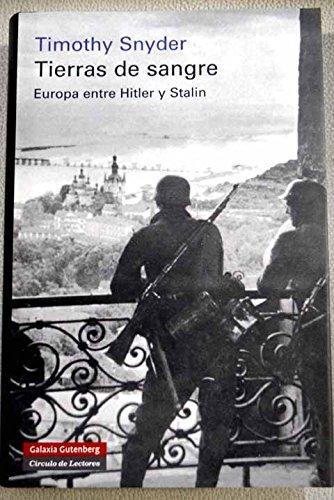620 páginas
Idioma Spanish
Publicado el 19 de diciembre de 2011

620 páginas
Idioma Spanish
Publicado el 19 de diciembre de 2011
Bloodlands: Europe Between Hitler and Stalin is a book by Yale historian Timothy D. Snyder that was first published by Basic Books on 28 October 2010. It is about mass murders committed during World War II in territories controlled by Nazi Germany and the Soviet Union. In this book, Snyder examines the political, cultural, and ideological context tied to a specific region of Central and Eastern Europe, where Joseph Stalin's Soviet Union and Adolf Hitler's Nazi Germany committed mass murders of an estimated 14 million noncombatants between 1933 and 1945, the majority outside the death camps of the Holocaust. Snyder's thesis is that the "bloodlands", a region that now comprises Poland, Belarus, Ukraine, the Baltic states (Estonia, Latvia, and Lithuania), northeastern Romania, and the westernmost fringes of Russia, is the area that Stalin and Hitler's regimes, despite their conflicting goals, interacted to increase suffering and bloodshed many times worse than …
Bloodlands: Europe Between Hitler and Stalin is a book by Yale historian Timothy D. Snyder that was first published by Basic Books on 28 October 2010. It is about mass murders committed during World War II in territories controlled by Nazi Germany and the Soviet Union. In this book, Snyder examines the political, cultural, and ideological context tied to a specific region of Central and Eastern Europe, where Joseph Stalin's Soviet Union and Adolf Hitler's Nazi Germany committed mass murders of an estimated 14 million noncombatants between 1933 and 1945, the majority outside the death camps of the Holocaust. Snyder's thesis is that the "bloodlands", a region that now comprises Poland, Belarus, Ukraine, the Baltic states (Estonia, Latvia, and Lithuania), northeastern Romania, and the westernmost fringes of Russia, is the area that Stalin and Hitler's regimes, despite their conflicting goals, interacted to increase suffering and bloodshed many times worse than had they acted independently.Snyder draws similarities between the two totalitarian regimes and the enabling interactions that reinforced the destruction and suffering that were inflicted upon noncombatants. According to Snyder, Nazi Germany was responsible for twice as many deaths as the Soviet Union.The book was awarded numerous prizes, including the 2013 Hannah Arendt Prize for Political Thought, and stirred up a great deal of debate among historians. Reviews ranged from highly critical to "rapturous".